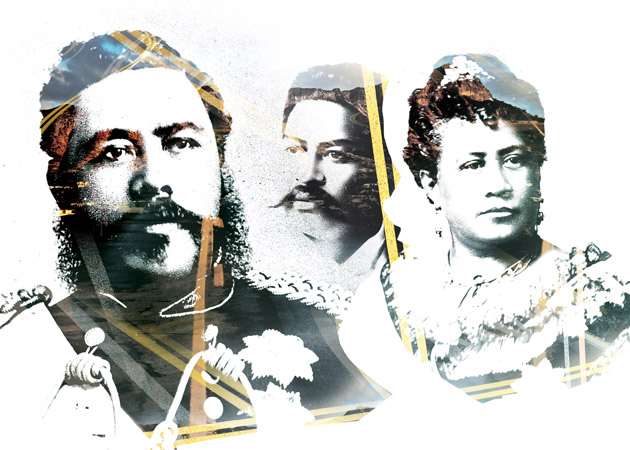Street Smarts
 Discover the stories behind the street names in Waikiki.
Discover the stories behind the street names in Waikiki.
When Peter Young, president of planning firm Ho‘okuleana, was working on his first project with the National Scenic Byway Program, he would sometimes wake up at 3 in the morning, unable to get back to sleep. Who could sleep with such exciting research to be done?
He relished pouring through documents trying to uncover the history behind various street names.
Young recently completed the same process for Waikiki as a part of the National Scenic Byway Program for the area, which was sponsored by the Native Hawaiian Hospitality Association.
As Young sees it, the project is all about “roads that tell stories.”
“The streets names can help tell stories about what a place looks like,” Young says. “A lot of the old roads have a lot of great stories that tell of a time in Hawai‘i, or about an event, or a person, or a place. And we need to be more attentive instead of just thinking of it as a street name. It is also is a story in and of itself.”
Here is a snapshot of a few Waikiki street names and historical tidbits that can be gleaned from them.
Olohana Street: According to Place Names of Hawaii by Mary Kawena Pukui, Samuel H. Elbert and Esther T. Mookini (which is touted as something of a Bible when it comes to name reference books), Olohana was named in honor of British sailor John Young, an aide and advisor to King Kamehameha I. Olohana means, “all hands.”
The story goes that John Young was detained by King Kamehameha I on Hawai‘i Island, and his ship left without him. But he befriended the King and taught Kamehameha and his men how to use firearms in battle.
“[John Young] would repeatedly make a reference of ‘all hands’—as in ‘all hands do this’ as an order,” Young explains.
John Young ended up being instrumental in helping Kamehameha I unite the Hawaiian Islands.
Uluniu Avenue: Cutting through Koa Avenue and Prince Edward Street to join Kalakaua and Kuhio avenues, Uluniu Avenue might look like any other bustling Waikiki street these days. But before the subdivision that encompassed what is now Uluniu Avenue was built in 1915, the area was lined with coconut trees. Hence the name, which means “coconut grove.”
Young explains that the Uluniu area also was the site of King Kalakaua and Queen Kapi‘olani’s home. The whole of Waikiki, in fact, was a popular gathering spot for Hawaiian royalty. King Kamehameha I also took up residence in Waikiki for a time.
Waikolu Way: A small side street sandwiched in between Kalakaua and Kuhio avenues, Waikolu Way is a reference to three streams that used to flow into Waikiki. As detailed in Place Names of Hawaii, Waikolu translates into “three waters.” Before the Waikiki area was developed, surrounding neighborhoods of Makiki, Manoa and Palolo each had separate streams that would meet in Waikiki.
“The three streams of each of those valleys used to empty out at Waikiki, before the Ala Wai [Canal] was dug,” Young explains.
Pau Street: In Hawaiian, “pau” means finished, and indeed, this street name signifies some sort of punctuation. It is just not clear what, exactly, as there are a few different theories.
The street is one of the last before heading out of Waikiki and entering what is known now as the McCully area. Place Names of Hawaii explains that the street was named by Bruce Cartwright, who was responsible for subdividing the area.
Young also has uncovered reports that Pau was the name of a nearby pond, although he has not been able to find any documents that substantiate that claim. Young believes instead that Pau was its own ili, or a small land division inside of a larger ahupua‘a, which is a section of land that was ruled by a particular chief.









